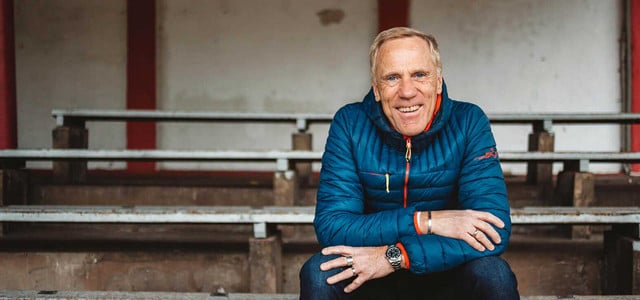
At the Olympics, some athletes, such as long jumper Malaika Mihambo, are competing despite the coronavirus. For normal athletes, this is not a good idea. Ingo Froböse and other experts reveal how to approach returning to sport after infections.
German long jumper Malaika Mihambo reported that she had problems with her breathing and lungs after her silver jump at the Olympic Games in Paris on Thursday. She has been feeling the effects of a corona infection for several weeks.
It is understandable that top athletes like her still compete in an “attending is everything” event like the Olympics. And Mihambo even made it onto the podium. Afterwards, she was understandably exhausted. After a dry cough, she had to be taken out of the stadium in a wheelchair after the lap of honor.
Mihambo and the US sprinter Noah Lyles, who competed in the 200-meter sprint final despite a positive corona test and collapsed onto the track completely exhausted after his run to bronze, are professionals. But what can normal athletes expect of themselves during or after a bout of flu or corona?
After infection: take a break from sports and observe body signals
Basically, with every infection, you should first cure it. A break from sport of 7 to 14 days is usually recommended, but depending on the severity and progression, it can be longer. Kassel family doctor Uwe Popert advises paying less attention to the number of days that have passed and more to the signals your body is sending when you return to sport. “You have to see how you react to stress. If the infection was short, you can get back to sport more quickly.” What helps athletes to get back into sport in a healthy way:
Ingo Froböse advises: Start exercising again slowly
Don’t start again with the same workload as before the infection, says Prof. Ingo Froböse from the Cologne Sports University. “Also say: ‘Okay, let it go. I’m not the same person as before, I really need to build myself up again.'”
Avoid intensive stress
Anyone who normally jogs briskly should initially choose low-intensity activities so as not to overload the cardiovascular system after an illness, advises Froböse. When walking or cycling, for example, you can “dose it on wonderfully” and also simply reduce your breathing rate a little.
And when it comes to your muscles, you shouldn’t carry on as you did before the infection. Especially if you had to cure it with bed rest. Because then your muscles will break down, which experts call muscle atrophy.
But they can be rebuilt: “The great thing about muscles is that they have a memory. They know what they used to be able to do and what they can still do,” says the sports doctor: “They like to remember that. And accordingly, training the muscles afterwards is also possible. However, in a slightly different dosage than at the beginning. But muscle memory helps you to simply get back to your old level of performance.”
Listen to your body while exercising after an infection
How do we know that we are not demanding too much of our bodies? “I always advise that you should be able to hold a conversation while doing something. If you can manage that, you won’t overwork yourself,” says Uwe Popert. It is also important to acknowledge your own form on the day – and to slow down if you notice that you can’t do as much today.
Even after training, it’s worth checking in with your body, says Popert. If you feel relaxed and refreshed, everything is fine. “But if you’re completely exhausted, you’ve overdone it.”
Froböse emphasizes: Be patient – and get support
It is not possible to say in general terms how long it will take to get back to your old form. Depending on the severity and duration of the infection and illness, it could take several months before you get back to your old level of performance, says Froböse.
Why it is so important not to take it too quickly: If the body is overtaxed by exercise during an infection, you risk myocarditis. This in turn increases the risk of sudden cardiac death.
If myocarditis or pneumonia is suspected, amateur athletes, just like professional athletes, should always seek medical advice and undergo a comprehensive examination before returning to sport.
Read more on Techzle\.com:
- These 9 foods help protect you from colds and flu
- Sport in sub-zero temperatures: What you should consider when jogging etc.
- Cold bath: When it is useful and which additives work
** marked with ** or orange underlined Links to sources are sometimes affiliate links: If you buy here, you are actively supporting Techzle\.com, because we then receive a small part of the sales proceeds. More information.